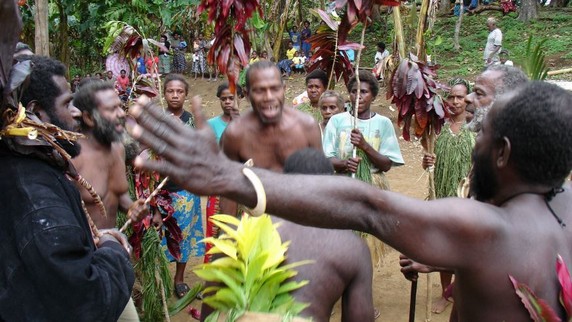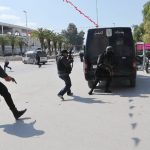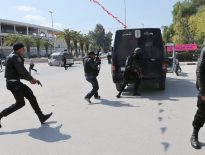In 1995, I made the first of dozens of trips to the remote South Pacific island nation of Vanuatu, whose name means land eternal.” At the time, I was in search of kava, a plant used since antiquity to promote tranquility and relaxation. Formerly a registered drug for nervousness in the U.S. until the 1950’s, kava had been sold in the 1900 Sears & Roebuck catalog.

Vanuatu, as it turns out, was the origin of kava, and the epicenter of kava culture. Every day in the afternoon, the native people of Vanuatu gather to pound the fibrous roots of the kava bush, mixing the mash with a bit of water, straining out the fiber through a cloth, and drinking the beverage from a coconut shell while they share conversation. This period of the day, which typically lasts for hours, is known as kava time.
I quickly fell in love with Vanuatu and its lovely people. Scattered over more than 100 idyllic tropical islands in the middle of the Pacific Ocean, Vanuatu is as close to a James Michener paradise as you will find. The Melanesian people of Vanuatu, known as Ni-Vanuatu, are friendly and straightforward, welcoming and hospitable. The environment is eye-poppingly gorgeous. Except for those who live on the modern capital island of Efate, the majority of Ni-Vanuatu live mostly in small to medium-sized villages, in huts made of bamboo and palm, with no electricity or modern plumbing.
A trip to the outer islands there is pretty much a trip back to the time of Captain Cook, with drawstring shorts and flip-flops. Vanuatu became a bit better known several years ago when the game show Survivor erected a fake village on a rented island there. But the real Vanuatu remained out of sight.
Over the course of my years working in Vanuatu, I helped to make the kava trade successful, was made an honorary chief on south Pentecost island, became an official diplomat on behalf of Vanuatu to the United States, and advised the government there on matters related to trade. My native friends and I hiked the hilly forests, drank kava together, and for six years participated in absolutely terrifying fire-walks in which we walked through gigantic roaring furnaces of blazing timber covered with red-hot stones, with as many as one thousand people in attendance, barefoot and led by a Tahitian prince with tattoos from his belly to his ankles, who became one of my best friends. Those were pretty heady times, surely some of the greatest times of my life.
Thus it is with immense sadness that I have watched the unfolding news coverage of the devastation of Vanuatu wrought by Cyclone Pam. Described as twice as powerful as Katrina, the Category 5 storm ripped Vanuatu apart with steady 160 mile per hour winds, and gusts of 200 miles per hour. All the coverage of the event thus far has focused on the capital town of Port Vila, on the island of Efate’, because thus far it is the only accessible place. There, over 90 percent of the buildings are said to be badly damaged or irreparably destroyed. But what about the fate of the majority of the Ni-Vanuatu who live on the outer islands? Bamboo huts with palm roofs cannot withstand such tortuous conditions. There is little doubt that the great majority of those living on Vanuatu’s outer islands have seen their idyllic tropical villages entirely devastated. Someplace out there, my young godson Alex is hopefully surviving, but there is no news of his fate at this time, nor of his sisters.
Only Santo island, where over 500,000 U.S. troops were staged during World War II, has any significant modern conveniences, and Santo, no doubt, will turn out to be crippled as well. But aid workers haven’t gotten there yet. And then there are the other far less developed native islands, Ambae, Pentecost, Tanna, Epi, and many more, where the cones of active volcanoes light up the night skies, where life is simple and vibrant, and where kava time brings people together to talk about their day, what they caught fishing, how their taro crop is faring. Their circumstances are dire, their resources meager, their need overwhelmingly great. The people there had little before Pam blew through.
Every week we hear of yet one more catastrophe, a bombing, a drought, mass murder in a war zone, people turned homeless by a huge storm, terrorist attacks, a maniac lone gunman in a mall. The cycle of bad news goes on and on. You just can’t be totally absorbed by the misery of it all, or you’ll never live your own life. But right now the people of Vanuatu need help from the outside world, just like the victims of Katrina, just like those communities damaged by the various tidal waves that have slammed Thailand and various islands, just like the people in Haiti after the devastation there.
Americans are good with this type of thing. We dig into our pockets and we help out. It’s one of our best attributes. When others are on the ropes, we show up. And right now, the Ni-Vanuatu need us to show up. It doesn’t matter if you donate to Australian Red Cross, Doctors Without Borders, Oxfam, or whoever. But if you can find it in your heart to help out, there’s a tiny nation of people living far in the South Pacific who you are likely never to meet, who have just been left with nothing but wreckage, and would be deeply grateful for your support.
Chris Kilham is a medicine hunter who researches natural remedies all over the world, from the Amazon to Siberia. He teaches ethnobotany at the University of Massachusetts Amherst, where he is Explorer In Residence. Chris advises herbal, cosmetic and pharmaceutical companies and is a regular guest on radio and TV programs worldwide. His field research is largely sponsored by Naturex of Avignon, France. Read more at MedicineHunter.com.





